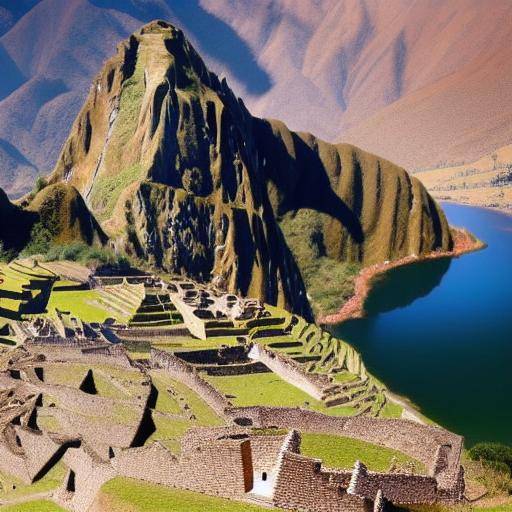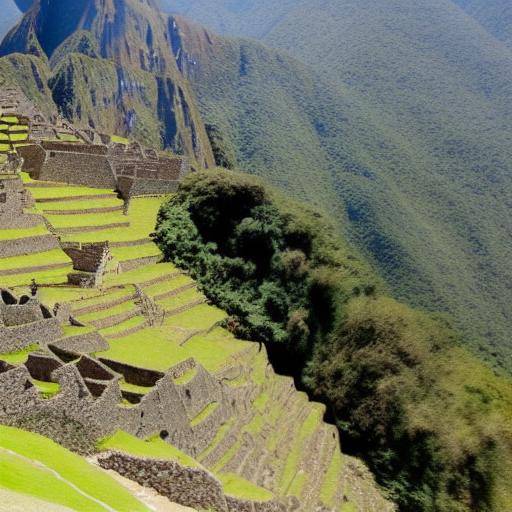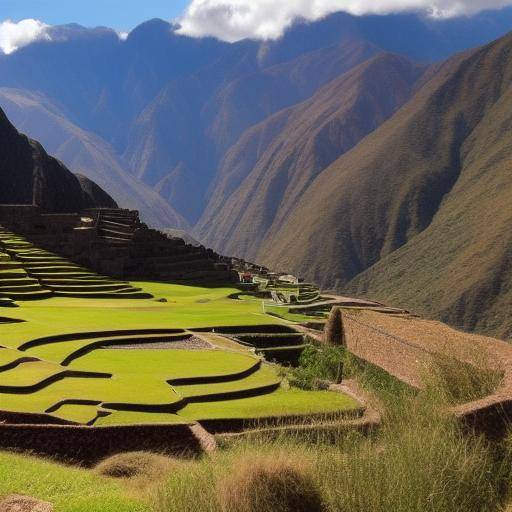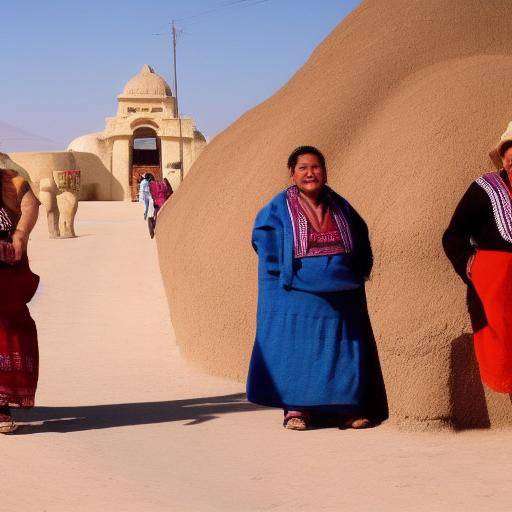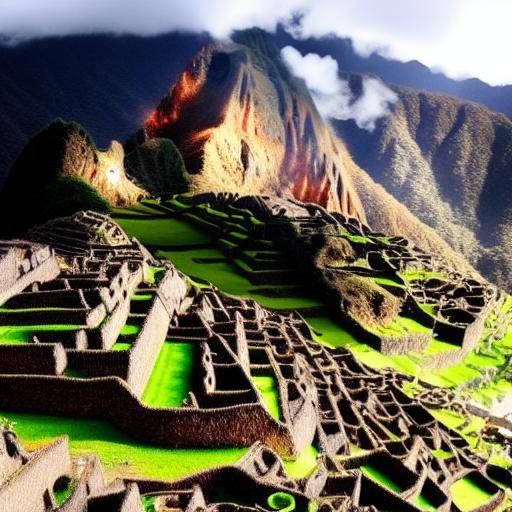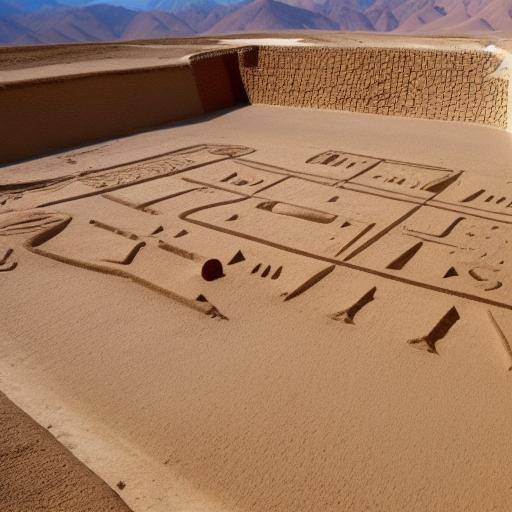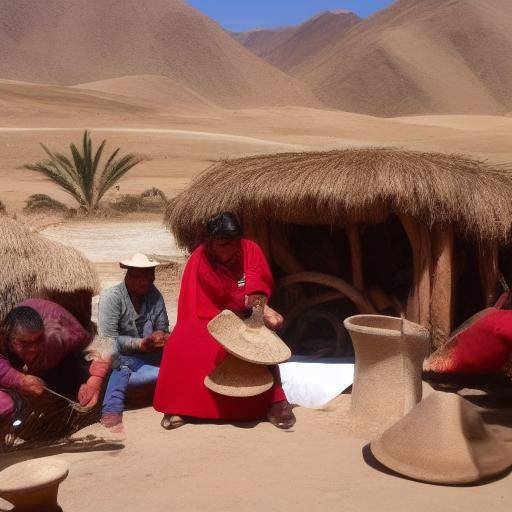
The Pisco, a drink that forms part of Peru's cultural legacy, is a symbol of tradition and artisanal distillation with a rich history dating back centuries. In this article, we will thoroughly explore the history, tradition and charm of the Pisco, the landscapes of Peru and Peruvian history as we discover the evolution and influence of this iconic beverage. From its historical roots to its current relevance, this article will provide a profound and complete perspective on the Pisco route in Peru.
Introduction
The Pisco, a unique grape range, gives Peru an incomparable cultural distinction. With its roots in colonial times, this drink has become an expression of Peruvian identity. In this article, we will talk about the history of the Pisco route in Peru, exploring its origins, evolution and its deep connection with Peruvian history and tradition.
History and Background
Since its inception in the coastal valleys of Peru, the Pisco has deepened its presence in the history of the region. In the 16th century, Spanish settlers began to cultivate vines to produce wine and aguardiente. It is in this context that the Pisco is born, whose name originates in the port of Pisco, from where the first pairs of this drink left to places like Lima and Cusco.
The nineteenth century marked a crucial point in the history of the Pisco, with the creation of the first distillery by pioneer entrepreneurs who laid the foundations for modern production. Over time, the Pisco played a crucial role in the economy and culture of Peru, consolidating itself as a national icon and gaining recognition of the denomination of origin.
Detailed Analysis
The history of the Pisco is intrinsically linked to the richness of viticulture in Peru, together with the artisanal skill transmitted from generation to generation. The complex technique of distillation, a careful process that preserves the essence of the grape, contributes to the uniqueness of the Pisco, making it a national treasure.
From the grape to the cup, the winemaking tradition and the artisanal distillation of the Pisco transcend mere elaborations to get into the realm of Peruvian cultural identity. The legacy of this distilled is connected with land, climate and crafts, resulting in a drink of deep historical and cultural roots.
Comprehensive review
The history of the Pisco in Peru is not only limited to its distillation, but encompasses a legacy rooted in traditions and rituals. From the celebrations of San Juan to the emblematic Pachamanca, the Pisco is an integral part of festivities and celebrations that mark the Peruvian calendar, highlighting its cultural value and its roots in society.
The diversity of strains used in the elaboration of the Pisco, each providing particular aromas and flavors, realizes the agricultural wealth and biodiversity that characterizes Peru. This plurality translates into a range of Piscos ranging from soft to aromatic, offering a unique sensory experience.
Comparative analysis
The relationship between Pisco, Peru and its Peruvian history is inseparable. This emblematic drink is intertwined with the natural wealth, history and identity of Peru, highlighting its cultural diversity and its role in the international scene.
Similarly, the relationship between the tradition of the distillation of the Pisco and the history of Peru evidences a symbiotic coordination, in which the historical wealth of the country is reflected in the complexity and quality of the distilled. This interconnection fully illustrates how the Pisco, Peru and its history unite to form an indissoluble legacy.
Practical Tips and Accionable Recommendations
If you are interested in enjoying the Pisco in its maximum expression, we recommend exploring various varieties of this drink in a tasting directed by experts. Learning about the different strains and processes of distillation will allow you to appreciate the richness and complexity of this traditional spirit.
In addition, it considers visiting the wineries and vineyards in the wine-growing regions of Peru to make a journey through the history and artisanal processes that give rise to the Pisco. This immersion will give you a unique perspective on cultural heritage and artisanal skill that characterizes the production of this drink.
Industrial Perceptions and Expert Reviews
According to experts in the vinification and distillation industry, the Pisco has experienced a significant resurgence in the international scene, being recognized for its authenticity and complexity. Its presence in high-end cocktails and its use in the gastronomy of mergers demonstrate its versatility and potential for captivating new audiences.
The current momentum of the Pisco in the global context offers an optimistic view of its future, highlighting its ability to play a leading role in the scene of spirits. This rebirth has promoted innovation and collaboration among producers, promoting the exchange of knowledge and experiences in order to strengthen and project the Pisco in the world.
Case studies and practical applications
Over the years, various gastronomic enterprises and renowned bars have integrated the Pisco into their cards, highlighting their versatility to star in cocktails and pairings that enrich the experience of the consumer. The versatility of the Pisco in the mixology has generated a wave of interest between demanding mixologists and consumers, thus promoting the presence and appreciation of this beverage reinterpreted in contemporary contexts.
Beyond the cocktail shop, the Pisco has also found its place in the high kitchen, in which recognized chefs have used this Peruvian aguardian to enhance flavours and aromas in cutting-edge dishes. This integration of the Pisco in high-level gastronomy underlines its potential to transcend borders and mark presence in the global culinary scene.
Future Trends and Predictions
On the horizon of the liquor industry, we see a promising panorama for the Pisco, with a sustained expansion in international markets and greater openness by consumers seeking delicacy and authenticity in their choices of spirits.
Trends point to a greater diffusion of the Pisco as an essential component in author's cocktails, as well as its presence in international festivals and renowned gastronomic events. This projection places the Pisco as an emerging protagonist in the global scene, willing to connect with new audiences and to captivate its cultural heritage and its sensory complexity.
Conclusion
The Pisco, with its history rooted in the tradition, the artisanal distillation and the cultural legacy of Peru, is a fundamental piece of national identity. Through its evolution, its impact on culture and its international projection, the Pisco has transcended borders to consolidate itself as a representative icon and an enological gem appreciated worldwide.
This article has explored the historical wealth of the Pisco, its interrelationship with Peru and its history, as well as its evolution to project promising future prospects.
Frequently asked questions
What is the difference between the Peruvian Pisco and the Chilean Pisco?
Peruvian and Chilean Pisco differ in terms of production regulations, used grape varieties, distillation methods and resulting flavors. While the Peruvian Pisco is distilled in specific grape varieties and has a denomination of origin, the Chilean Pisco has its own rules and tradition. Both versions are unique in their aromatic and tasteful profiles, reflecting the particularities of the wine regions in each country.
What is the importance of Pisco in Peruvian culture?
The Pisco occupies a place of relevance in Peruvian culture, being a symbol of national identity and an integral component of festivities and celebrations. Its history is intertwined with the tradition of the country, and its artisanal distillation represents centuries of winemaking mastery that reflects the richness of Peru.
How can you enjoy the Pisco better?
To fully enjoy the Pisco, it is recommended to explore the various varieties, from the softest to the most aromatic, in a tasting guided by experts. Also, you can know its origins by visiting wineries and vineyards in the wine-growing regions of Peru, immersed in the history and culture surrounding this drink.
What is the region of Peru most famous for Pisco production?
The Ica region is recognized as the epicenter of Pisco production in Peru, highlighting its wine valleys and its significant contribution to the country's winemaking tradition. The landscapes of Ica house vineyards that constitute the core of the production of pisquera grapes and the artisanal distillation of the Pisco.
What is the historical meaning of the Pisco for Peru?
The Pisco has a profound historical significance for Peru, since its origin dates back to the colonial era and has evolved into an emblem of national identity. Its artisanal distillation and its roots in Peruvian culture place it as a tangible manifestation of the country's history and tradition.
What is the best way to enjoy the Pisco in terms of cocktails?
The Pisco lends itself to a wide variety of cocktails, from classics such as Pisco Sour to contemporary creations that highlight its versatility. The cocktail with Pisco allows to play with fruity, citrus and spicy flavors, offering a multi-sensory experience that enhances the complexity of this spirit.
Final Conclusions
In short, the history of the Pisco route in Peru reveals an amalgam of tradition, artisanal distillation and a cultural identity marked by the enological mastery. From its origins in the colonial era to its projection at the global scene, the Pisco has traveled a unique path that places it as an intangible heritage of the country. This emblematic drink, with its complex history and resonance in Peruvian culture, embodies an authentic expression of tradition and craftsmanship that shape the legacy of the Pisco and its route in Peru.

